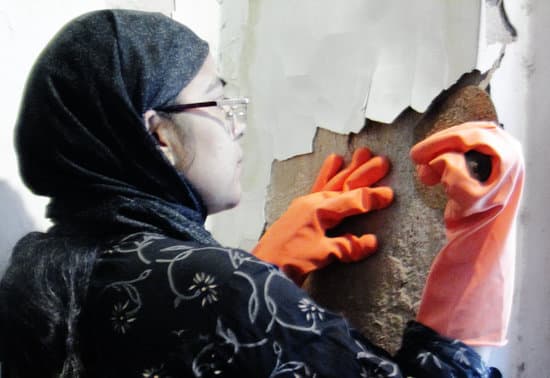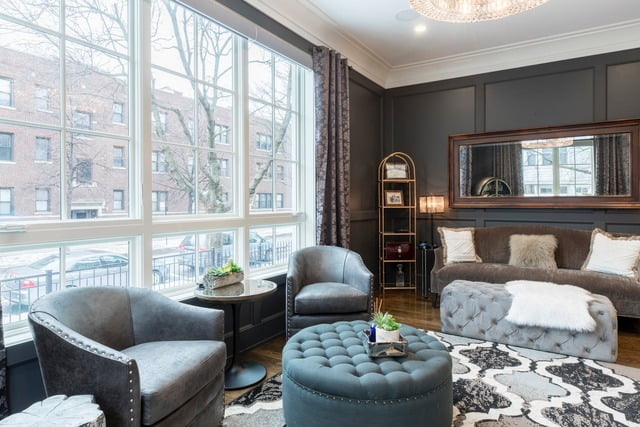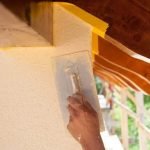When it comes to increasing the value of your home, one often overlooked aspect is the choice of flooring. The type of flooring you have can have a significant impact on the overall value and appeal of your property. In this article, we will explore the different types of flooring that best improve the price of your home and discuss their unique characteristics and benefits.
Flooring plays a crucial role in determining the aesthetic appeal and functionality of a space. Whether you are looking to sell your home or simply want to enhance its value, choosing the right flooring can make all the difference. Potential buyers are often drawn to homes with high-quality flooring that not only adds elegance but also withstands wear and tear over time.
In this comprehensive guide, we will delve into various flooring options available in today’s market and their respective contributions to enhancing home value. From classic hardwood flooring to luxurious stone and tile options, budget-friendly laminate choices to eco-friendly cork alternatives, we will explore each type’s unique features, advantages, and disadvantages. By understanding how different types of flooring impact home value, you can make informed decisions for each area of your house while maximizing return on investment.
Understanding the Connection between Flooring and Home Value
When it comes to increasing the value of your home, one important factor to consider is the type of flooring you choose. The right flooring can have a significant impact on the overall value and appeal of your property. Understanding the connection between flooring and home value is essential for making informed decisions when it comes to upgrading or installing new floors in your home.
There are several factors to consider when assessing the connection between flooring and home value. First and foremost, durability plays a crucial role. High-quality flooring that can withstand wear and tear is not only attractive to potential buyers but also ensures longevity and less frequent replacement or repairs.
Another factor to take into account is the overall aesthetic appeal of the flooring. Choosing a type of flooring that complements the style and design of your home can significantly enhance its visual appeal and increase its value. Additionally, considering how well the flooring material matches with other elements in your house, such as wall colors, furniture, and decor, is also important for creating a cohesive look.
Furthermore, maintenance requirements should be considered. Flooring that requires minimal upkeep or is easy to clean tends to be more appealing to homeowners and potential buyers alike. Nobody wants high-maintenance flooring that demands constant attention or expensive cleaning products.
Ultimately, understanding these various factors will help you make an informed decision about which type of flooring best suits your needs while simultaneously adding value to your home.
| Factor | Consideration |
|---|---|
| Durability | Choose high-quality flooring that withstands wear and tear. |
| Aesthetic Appeal | Select a type of flooring that complements your home’s style and design. |
| Maintenance Requirements | Opt for flooring that requires minimal upkeep or is easy to clean. |
Hardwood Flooring
When it comes to increasing the value of your home, hardwood flooring is often considered the gold standard. With its timeless appeal and elegant aesthetic, hardwood floors can significantly enhance the overall look and feel of a space. Here are some key factors to consider when choosing hardwood flooring for your home:
Types of Hardwood Flooring
There are several types of hardwood flooring to choose from, including solid hardwood and engineered hardwood. Solid hardwood is made from a single piece of wood and can be sanded and refinished multiple times. Engineered hardwood, on the other hand, consists of multiple layers of wood glued together, with a top layer of real wood veneer. Both options have their advantages and offer different levels of durability.
Popular Wood Species
Hardwood flooring comes in a wide variety of wood species, each with its own unique characteristics. Some popular choices include oak, maple, cherry, walnut, and hickory. The type of wood you choose can have a significant impact on the overall style and ambiance of your home. For example, oak is known for its durability and traditional appeal, while cherry offers a warm and luxurious look.
Installation Considerations
Installing hardwood flooring requires careful consideration as it needs to be properly acclimated to your home’s environment before installation to prevent warping or shrinking later on. It’s also essential to hire professional installers who have experience working with hardwood floors to ensure proper installation techniques are followed.
Maintenance and Longevity
Hardwood floors require regular maintenance to keep them looking their best. This includes sweeping or vacuuming regularly to remove dirt and debris, promptly wiping up spills, and using appropriate cleaning products designed specifically for hardwood floors. With proper care, hardwood floors can last for decades and even improve in appearance over time.
Luxurious Stone and Tile Flooring
Luxurious stone and tile flooring are highly desirable options for homeowners looking to make a lasting impression and increase the value of their home. Stone and tile flooring offer a sense of sophistication, durability, and luxury that can greatly enhance the overall appeal of any space. In this section, we will explore why stone and tile flooring are excellent choices for adding value to your home.
One major advantage of stone and tile flooring is its durability. These materials are known for their resilience against wear and tear, making them perfect for high-traffic areas such as entryways, kitchens, and bathrooms. Stone and tile floors can withstand heavy foot traffic, spills, stains, and scratches better than many other types of flooring. The longevity that comes with stone and tile flooring ensures that they will last for years to come, maintaining their beauty in the process.
In addition to their durability, stone and tile flooring also offer a wide range of design options. There is an abundance of colors, patterns, sizes, and textures available in both natural stones like marble or granite and ceramic or porcelain tiles. Homeowners can choose from sleek modern designs or opt for more traditional looks depending on their personal preferences. The versatility of these materials allows them to fit seamlessly into any home decor style.
When it comes to increasing home value, it is important to note that not all stone and tile flooring options are created equal. Some materials may be more valuable than others due to factors such as rarity or exclusivity.
For example, natural stones like marble or travertine tend to carry a higher price tag compared to ceramic or porcelain tiles. However, investing in high-quality materials can yield a significant return on investment when it comes time to sell your home.
To summarize,
| Advantages | Considerations |
|---|---|
| Durability: Resistant against wear and tear, spills, stains, and scratches. | Higher initial cost compared to other flooring options. |
| Versatility: Wide range of design options to fit any home decor style. | Requires professional installation for best results. |
| Increases home value: High-quality materials can yield a significant return on investment. | Maintenance and cleaning may be more time-consuming compared to other flooring types. |
The Allure of Laminate Flooring
Laminate flooring has become increasingly popular in recent years due to its budget-friendly nature and stylish appearance. It offers homeowners the opportunity to achieve the look of hardwood or tile flooring at a fraction of the cost. Laminate flooring is composed of multiple layers, with a high-density fiberboard core and a photographic layer that mimics the appearance of various materials. The top layer is a protective clear coat that provides durability and resistance to scratches and stains.
One of the biggest advantages of laminate flooring is its affordability. Compared to hardwood, stone, or tile flooring, laminate can be significantly cheaper per square foot. This makes it an excellent choice for homeowners who want to update their flooring on a budget or those who are looking to increase their home’s value without breaking the bank.
In addition to being cost-effective, laminate flooring also offers a wide range of designs and styles. Its photographic layer can replicate the natural look of wood grains, stone textures, or tile patterns, allowing homeowners to achieve their desired aesthetic without the expense associated with traditional materials. From classic oak finishes to modern gray tones, there are countless options available to suit any design preference.
Overall, laminate flooring is an attractive option for homeowners looking for an affordable and stylish flooring solution that can enhance the value of their home. Its cost-effectiveness and variety of design choices make it a versatile option for any room in the house.
However, it’s important to carefully consider factors such as foot traffic, moisture levels, and installation requirements before choosing laminate for specific areas like kitchens or bathrooms. Consulting with a professional can help ensure you make the best decision for your home’s needs.
The Rising Popularity of Engineered Wood Flooring
Engineered wood flooring has gained significant popularity in recent years due to its ability to balance aesthetics and durability. This section will explore why engineered wood flooring is a sought-after choice for homeowners looking to improve the price of their homes.
What is Engineered Wood Flooring?
Engineered wood flooring is made up of multiple layers of real wood that are bonded together with adhesive. The top layer, known as the veneer, is made from high-quality hardwood, giving the flooring a natural and luxurious appearance.
Beneath the veneer, there are several layers of plywood or high-density fiberboard (HDF) that provide stability and strength to the flooring. This construction allows engineered wood to be more resistant to moisture and fluctuations in temperature compared to solid hardwood floors.
The Advantages of Engineered Wood Flooring
One of the main advantages of engineered wood flooring is its durability. With its multi-layer construction, it can withstand heavy foot traffic and resist warping or cupping caused by changes in humidity levels. This makes it an ideal choice for areas such as living rooms, kitchens, and hallways.
Another advantage is that engineered wood flooring offers a wide range of design options. The top layer can be made from various hardwood species, allowing homeowners to choose a style that suits their preferences and complements their home’s interior design. Additionally, engineered wood can be finished with different stains and coatings to achieve different looks, from traditional to contemporary.
Installing Engineered Wood
Installing engineered wood flooring is generally easier and less time-consuming compared to solid hardwood floors. It can be installed using several methods such as floating installation or glue-down installation. With advancements in technology, some engineered wood planks come with click-lock systems that make DIY installation possible for those with basic handyman skills.
Exploring the Benefits of Carpet Flooring
Carpet flooring is a popular choice for homeowners who prioritize comfort and coziness in their living spaces. Not only does carpet add a touch of warmth to any room, but it also offers numerous benefits that can improve the overall value of your home.
One of the main advantages of carpet flooring is its softness and cushioning effect. Unlike hard surface flooring options, such as hardwood or tile, carpet provides a comfortable surface to walk and sit on, making it ideal for areas where you spend a lot of time on your feet, like bedrooms or living rooms. The softness of carpet also absorbs sound, reducing noise levels and creating a quieter environment within your home.
In addition to comfort, carpet flooring offers insulation properties that help improve energy efficiency. The fibers in carpet act as a thermal insulator, trapping heat and preventing it from escaping through the floor. This can result in lower heating costs during colder months and contribute to a more sustainable living space.
Moreover, carpet flooring provides an extra layer of safety with its slip-resistant surface. This is especially beneficial for households with elderly individuals or young children who are more prone to accidents and falls. The traction provided by carpet helps prevent slips and provides a safer environment for everyday activities.
Overall, the benefits of carpet flooring make it an appealing choice for homeowners seeking comfort, warmth, insulation, and safety in their homes. When selecting carpet for different areas of your home, consider factors such as fiber type (such as nylon or polyester), pile height (the thickness or density of the carpet), and color options that will complement your existing decor.
By choosing high-quality materials and proper maintenance, you can ensure that your carpet retains its value over time while providing the cozy atmosphere you desire.
The Unexpected Beauty of Cork Flooring
Cork flooring may not be the first type of flooring that comes to mind when considering options to improve the price of your home, but it offers unexpected beauty along with sustainability and eco-friendliness. Cork flooring is made from the bark of cork oak trees, which means that it is a renewable resource as the trees are not cut down during the harvesting process.
This makes cork flooring an environmentally friendly choice for homeowners who want to reduce their carbon footprint.
One of the standout features of cork flooring is its unique and natural appearance. The varying patterns and textures found in cork give it a warm and inviting aesthetic that can enhance any room in your home. Additionally, cork flooring is available in a range of colors and finishes to suit different design preferences. With its timeless appeal, cork flooring can add value and make a lasting impression on potential buyers.
Not only is cork flooring visually appealing, but it also offers practical benefits. One of these benefits is its ability to provide insulation. Cork’s natural cellular structure traps air within the material, making it an excellent thermal insulator that helps to keep your home warm in winter and cool in summer.
This can lead to energy savings and increase the overall comfort level of your home. Additionally, cork has acoustic properties that reduce noise transmission, making it ideal for rooms where noise reduction is desirable such as bedrooms or home offices.
Choosing the Right Flooring for Different Areas of Your Home
When it comes to selecting the right flooring for different areas of your home, it’s important to consider both functionality and aesthetics. Each area has its own unique requirements, and choosing the appropriate flooring can greatly enhance the overall look and feel of your space. Here are some tips and recommendations to help you make the right choices:
- Living Areas: In high-traffic areas such as living rooms, durability is key. Hardwood flooring is a popular choice due to its timeless appeal and ability to withstand heavy foot traffic. If you prefer a more budget-friendly option, laminate flooring can provide a similar look at a lower cost.
- Kitchen and Bathroom: These areas are prone to moisture and spills, so it’s crucial to choose flooring that is water-resistant or waterproof. Luxury vinyl tile (LVT) is an excellent choice as it is both affordable and highly durable. Ceramic or porcelain tiles also work well in these spaces, offering easy maintenance and a wide range of design options.
- Bedrooms: Comfort is paramount in bedrooms, making carpet an ideal choice for this area of your home. Carpet provides warmth underfoot and reduces noise levels, creating a cozy atmosphere for relaxation. Additionally, there are various types of carpet fibers available, so be sure to choose one that suits your needs in terms of durability and ease of maintenance.
- Entryways: The entryway sets the tone for your entire home, so opt for flooring that makes a lasting impression. Porcelain tiles with an interesting pattern or natural stone such as granite can add elegance while standing up to heavy foot traffic.
| Area | Ideal Flooring Options |
|---|---|
| Living Areas | Hardwood, Laminate |
| Kitchen and Bathroom | LVT, Ceramic/ Porcelain Tiles |
| Bedrooms | Carpet |
| Entryways | Porcelain Tiles, Natural Stone (Granite) |
By choosing the right flooring for each area of your home, you can create a cohesive and functional space that not only suits your needs but also enhances the value of your property. Remember to consider factors such as durability, maintenance requirements, and aesthetic appeal when making your flooring decisions.
Investing in high-quality flooring will not only provide a better living experience for you and your family but also maximize the return on investment when it comes time to sell your home.
The Flooring Mistakes to Avoid
While selecting the right flooring can greatly enhance the value of your home, making certain flooring mistakes can have a negative impact on its overall worth. To ensure that your flooring choice doesn’t detract from the value of your home, it is important to avoid some common pitfalls. This section will highlight some key mistakes to avoid when it comes to choosing and installing flooring in your home.
Ignoring Overall Home Style and Design
One common mistake homeowners make is not considering the overall style and design of their home when selecting flooring. It is important to choose a flooring material that complements the aesthetic of your home rather than clashes with it.
For example, if you have a traditional-style home, opting for modern or industrial-style flooring may not appeal to potential buyers and could lower the value of your property. Take into account the architectural features, color palettes, and overall theme of your home when choosing flooring materials.
Not Considering Durability and Maintenance
Another mistake that homeowners often make is neglecting to consider the durability and maintenance requirements of different types of flooring. While certain materials might be visually appealing, they may not be suitable for high-traffic areas or households with pets or young children.
For instance, choosing a delicate hardwood floor in an area prone to heavy foot traffic can result in excessive wear and tear, leading to costly repairs or replacements down the line. It’s crucial to assess how much time, effort, and money you are willing to invest in maintaining different types of flooring before making a decision.
Overpersonalization
Although customizing your living space can be exciting, going overboard with unique or unconventional flooring choices can negatively impact your home’s value. While you may love bright colored tiles or bold patterns on carpets, potential buyers might find them overwhelming or off-putting.
If you plan on selling your home in the future, it’s best to opt for neutral flooring options that appeal to a wide range of tastes and preferences. This way, you can avoid turning away potential buyers and maximize the overall value of your home.
In order to make the most out of your investment in flooring and maintain or increase your home’s value, it is important to avoid these common flooring mistakes. By considering the overall design, durability, maintenance requirements, and keeping personalization choices neutral, you can ensure that your flooring choice contributes positively to the overall value of your home.
Final Thoughts
Investing in high-quality flooring is a crucial consideration for homeowners looking to maximize the return on their investment. The type and quality of flooring in a home can have a significant impact on its overall value and appeal to potential buyers. Therefore, it is essential to carefully choose the right flooring option for each area of your home.
Hardwood flooring has long been considered a classic choice that adds value and elegance to any space. Its timeless beauty and durability make it an excellent investment, as it can significantly increase the resale value of your home. Similarly, luxurious stone and tile flooring make a lasting impression with their high-end aesthetic appeal and durability.
For those on a budget, laminate flooring offers an attractive alternative that does not compromise style or quality. With advancements in technology, laminate flooring now closely resembles natural wood or stone at a fraction of the cost. This affordability makes it an appealing option for homeowners looking to improve their home’s value without breaking the bank.
Another popular choice is engineered wood flooring, which combines the beauty of hardwood with enhanced durability. This engineered option is less susceptible to moisture damage and can withstand heavy foot traffic, making it suitable for high-traffic areas such as entryways or kitchens.
Carpet flooring provides unmatched comfort and coziness, making it perfect for bedrooms or living areas where relaxation is key. It adds warmth to any space while reducing noise levels. Additionally, cork flooring stands out due to its sustainability and eco-friendliness. Made from renewable resources, cork is an environmentally conscious choice that has gained popularity in recent years.
When selecting the right flooring for your home, it is crucial to take into account the specific needs of each area. For example, highly durable options may be more suitable for high-traffic areas like hallways or kitchens, while areas where comfort is essential would benefit from carpeting.
Finally, avoiding common pitfalls in choosing the wrong type or quality of flooring is vital for preserving your home’s value. Choosing cheap or inappropriate flooring options for certain areas, neglecting proper maintenance and upkeep, or failing to consider long-term durability can all have a negative impact on the overall value of your home.
In conclusion, investing in high-quality flooring is an excellent strategy for increasing the value of your home. Whether you opt for hardwood, stone and tile, laminate, engineered wood, carpet, or cork flooring, choosing the right option for each space can significantly impact the return on investment. By considering factors such as aesthetics, durability, comfort, and sustainability, homeowners can make well-informed decisions that will enhance both their enjoyment of their home and its market value.
Frequently Asked Questions
What flooring adds value?
Hardwood flooring is widely considered to be the type of flooring that adds the most value to a home. This timeless and elegant flooring choice appeals to many buyers and can significantly increase the perceived value of a property.
Hardwood floors are durable, long-lasting, and can be refinished multiple times throughout their lifespan, making them an excellent investment for homeowners. The natural beauty and versatility of hardwood also make it a popular choice among homebuyers.
Does luxury vinyl plank increase home value?
Luxury vinyl plank (LVP) flooring has gained popularity in recent years as an affordable alternative to hardwood or stone flooring. While LVP may not add as much value to a home as hardwood, it can still positively impact a property’s value.
LVP is known for its durability, water resistance, and easy maintenance, which can be appealing to potential buyers looking for a low-maintenance flooring option. Additionally, luxury vinyl plank can mimic the look of various high-end materials such as hardwood or tile, allowing homeowners to achieve an upscale appearance without the associated cost.
Does putting in new flooring increase home value?
Yes, putting in new flooring can generally increase the value of a home. Old or worn-out floors can negatively affect the overall aesthetic appeal and functionality of a property, often leading potential buyers to perceive it as less valuable than other comparable homes in the area. Installing new flooring allows homeowners to update their space and create a fresh look that appeals to prospective buyers.
However, it’s important to choose durable materials and styles that have broad market appeal when replacing flooring with the goal of increasing home value. Selecting trendy options that may quickly go out of style could have less impact on real estate value in the long run.

I’m thrilled to have you here as a part of the Remodeling Top community. This is where my journey as an architect and remodeling enthusiast intersects with your passion for transforming houses into dream homes.





